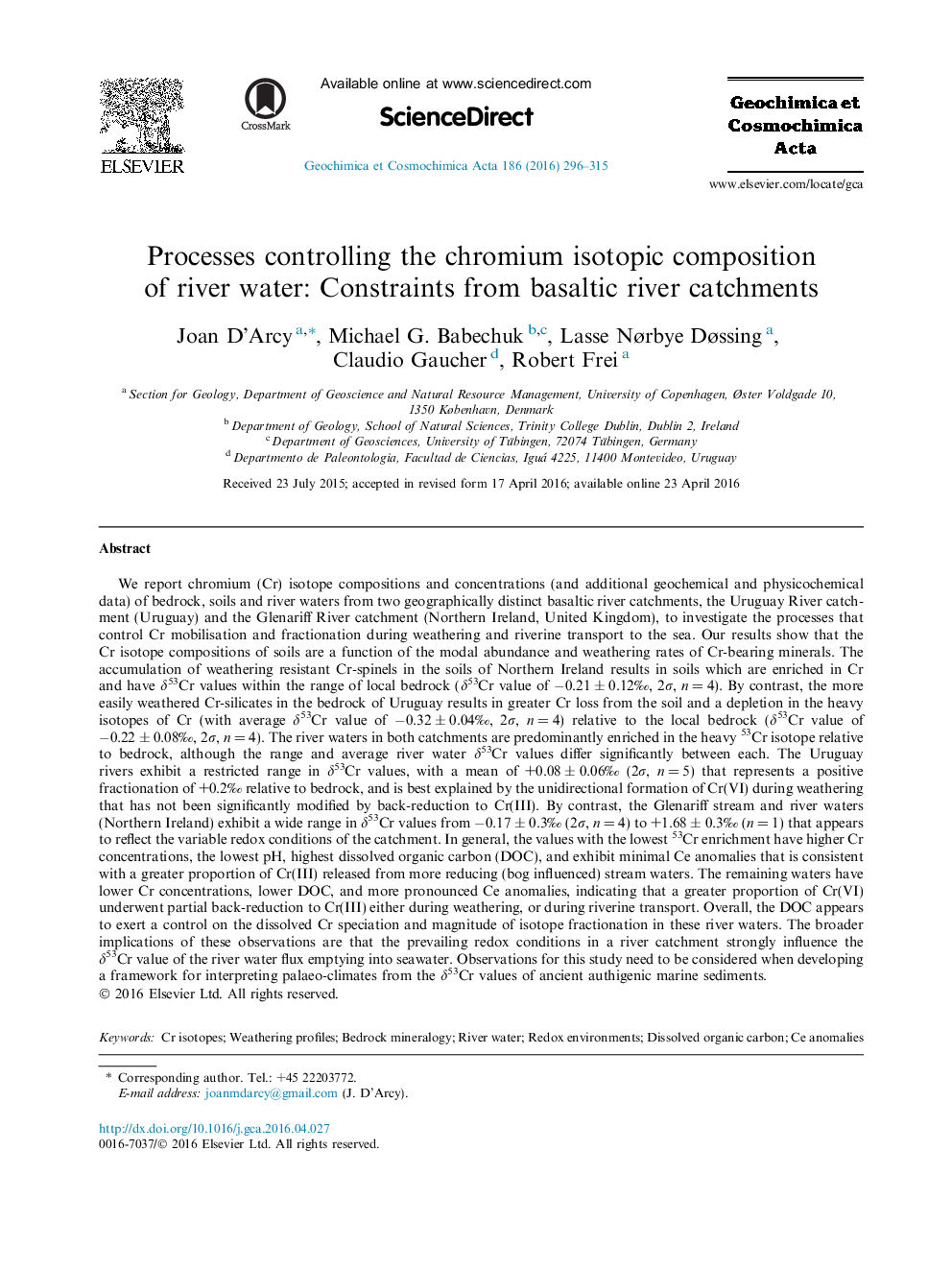| کد مقاله | کد نشریه | سال انتشار | مقاله انگلیسی | نسخه تمام متن |
|---|---|---|---|---|
| 6437301 | 1637971 | 2016 | 20 صفحه PDF | دانلود رایگان |
We report chromium (Cr) isotope compositions and concentrations (and additional geochemical and physicochemical data) of bedrock, soils and river waters from two geographically distinct basaltic river catchments, the Uruguay River catchment (Uruguay) and the Glenariff River catchment (Northern Ireland, United Kingdom), to investigate the processes that control Cr mobilisation and fractionation during weathering and riverine transport to the sea. Our results show that the Cr isotope compositions of soils are a function of the modal abundance and weathering rates of Cr-bearing minerals. The accumulation of weathering resistant Cr-spinels in the soils of Northern Ireland results in soils which are enriched in Cr and have δ53Cr values within the range of local bedrock (δ53Cr value of â0.21 ± 0.12â°, 2Ï, n = 4). By contrast, the more easily weathered Cr-silicates in the bedrock of Uruguay results in greater Cr loss from the soil and a depletion in the heavy isotopes of Cr (with average δ53Cr value of â0.32 ± 0.04â°, 2Ï, n = 4) relative to the local bedrock (δ53Cr value of â0.22 ± 0.08â°, 2Ï, n = 4). The river waters in both catchments are predominantly enriched in the heavy 53Cr isotope relative to bedrock, although the range and average river water δ53Cr values differ significantly between each. The Uruguay rivers exhibit a restricted range in δ53Cr values, with a mean of +0.08 ± 0.06â° (2Ï, n = 5) that represents a positive fractionation of +0.2â° relative to bedrock, and is best explained by the unidirectional formation of Cr(VI) during weathering that has not been significantly modified by back-reduction to Cr(III). By contrast, the Glenariff stream and river waters (Northern Ireland) exhibit a wide range in δ53Cr values from â0.17 ± 0.3â° (2Ï, n = 4) to +1.68 ± 0.3â° (n = 1) that appears to reflect the variable redox conditions of the catchment. In general, the values with the lowest 53Cr enrichment have higher Cr concentrations, the lowest pH, highest dissolved organic carbon (DOC), and exhibit minimal Ce anomalies that is consistent with a greater proportion of Cr(III) released from more reducing (bog influenced) stream waters. The remaining waters have lower Cr concentrations, lower DOC, and more pronounced Ce anomalies, indicating that a greater proportion of Cr(VI) underwent partial back-reduction to Cr(III) either during weathering, or during riverine transport. Overall, the DOC appears to exert a control on the dissolved Cr speciation and magnitude of isotope fractionation in these river waters. The broader implications of these observations are that the prevailing redox conditions in a river catchment strongly influence the δ53Cr value of the river water flux emptying into seawater. Observations for this study need to be considered when developing a framework for interpreting palaeo-climates from the δ53Cr values of ancient authigenic marine sediments.
Journal: Geochimica et Cosmochimica Acta - Volume 186, 1 August 2016, Pages 296-315
